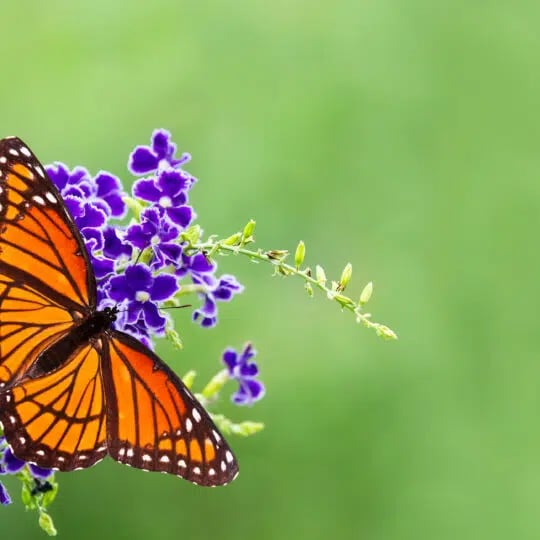What's the Difference Between Moths and Butterflies?
How to Tell the Difference

It’s the time of year when you can take out your butterfly net and catch a few of the winged insects gracing your yard. Before you chase after the mesmerizing bugs, do you know if you’re catching moths or butterflies? Both of these insects are from the order Lepidoptera, but they do differ. Learn the difference between moths and butterflies so you can identify the ones you manage to trap and admire!
What’s the Difference Between Moths and Butterflies?
Antennae
This is one of the easiest ways to tell them apart! Antennae are the long, slender structures located on the head. Butterflies and moths use them for balance and detecting smells and wind speed.
- Moths: The antennae are feathery or saw-edged.
- Butterflies: The antennae have a long shaft and bulb at the end.
Wings
- Moths: Moths rest with their wings in an open position.
- Butterflies: When resting, butterflies tend to keep their wings closed. However, they are times with they “sun bake” and keep their wings in an open position.
Behavior
- Moths: If you’ve ever observed moths congregating around artificial lights at night, you might not be surprised to learn they are nocturnal.
- Butterflies: Butterflies are diurnal (active during the daytime).
Life Cycle
- Moths: To go through metamorphosis, moth caterpillars create a silk pupa.
- Butterflies: It’s one of the first things you learn about butterflies at school! They make cocoons to turn from a caterpillar into a butterfly. Butterflies spin a pupa made with hardened protein.
For Answers to All Your Pest Questions, Call Green Pest Solutions.
While there aren’t many pests we like, we can say butterflies top the list of most-loved. Those other pests, however, need to go. That’s why we developed our Green Band Protection System. This eco-friendly pest control service targets only invasive pests while leaving the beneficial pests to thrive and support nature. Call us today at 855-312-7157 to request a free quote.